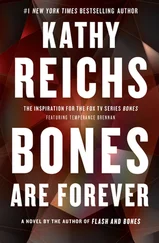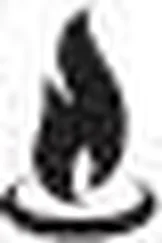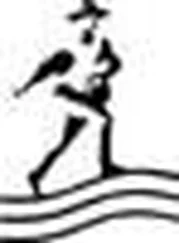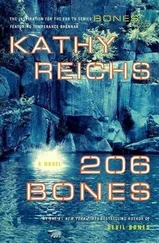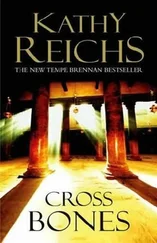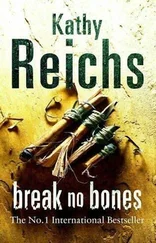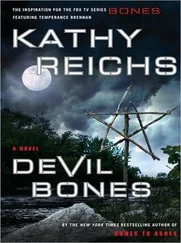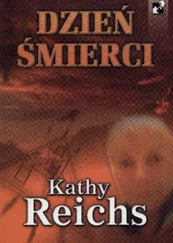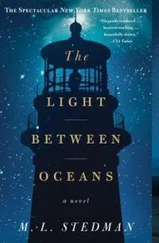“There may be something here.” I angled the bone so Blanton’s camera could pick up the marks.
“Could be powder stippling. But it’s evenly distributed.”
“So no way to tell direction,” Blanton guessed.
“No.” After a few more moments of angling and squinting.
Disappointed, I dictated a description of the defect. Blanton took several more close-ups with a Nikon and scale, then shot backups with a Polaroid.
“These babies have come a long way from the clunkers we used in the old days.” Blanton pulled the image free and laid it on the counter. “Fourteen megapixels, inkless three-by-five prints. The detail is passable in a pinch. I’ve seen way too many disasters with supposedly error-proof top-of-the-line equipment. I always shoot backups.”
Hats off to you, Mr. Blanton.
I continued searching, fragment by fragment.
And came up blank.
Discouraged, I straightened and rolled my shoulders. The clock said 12:10.
“Break?” Blanton asked.
I shook my head. “Now that the bones are arranged, Rasekh goes back to radiology.”
Blanton called for the tech who’d X-rayed the remains while still wrapped in their shroud. He arrived in moments. Harold. After instruction from me, Harold wheeled the gurney out through the doors.
“Unless the films pick up something I’ve missed, which is unlikely, Rasekh is a bust. Let’s move on.”
I dictated the second man’s name. Ahmad Ali Aqsaee. After adding the other relevant information, I viewed the X-rays of Aqsaee in his shroud.
And relaxed a micron.
Aqsaee was in better condition than Rasekh. Made sense. He was still underground when the mortar hit. Nevertheless, normal postmortem damage appeared extensive.
Satisfied there was nothing amiss in the shroud, I crossed to the gurney, unzipped the body bag, and laid back the fabric.
Beside me, Blanton inhaled sharply.
Like Rasekh, Aqsaee had been reduced to bone. But his skeleton differed in one striking way.
The uninitiated think bone is white. They picture Halloween posters, instructional models from biology class, or the bleached cattle rib cages popular in western movies. But bone often takes on the pigment of the substrate in which it is buried.
That had happened with Aqsaee. His skeleton was the color of old saddle leather.
“That’s not something you see every day.”
“It’s not uncommon,” I told Blanton. “Most likely minerals leached from the rocks or soil.”
“Why only this guy?”
“Could be the elemental makeup was different at the back of the cemetery. Maybe runoff from the hillside percolated through Rasekh’s grave, washing the critical component away.”
“The staining won’t cause you problems?”
“No.”
I approached the younger man exactly as I had the older. With only slightly less trepidation.
I confirmed that all skeletal and dental features were consistent with Aqsaee’s bio profile. Male. Seventeen years old.
“Doc.”
“I looked at Blanton.
“The rest of the team needs lunch.”
Reluctantly, I agreed. Thirty minutes later we were back. I began my trauma analysis.
The skull was pristine. No fractures. No bullet holes.
Blanton shot close-ups from multiple angles.
Though the mandible was broken at the midline, I suspected the damage was postmortem and due to pressure from the overlying soil.
More photos.
The arms and legs showed no evidence of trauma. I moved on to the rib cage.
Aqsaee’s midsection was damaged almost as badly as Rasekh’s. Viewing the fragmented ribs, broken clavicles, and crushed and abraded vertebrae, scapulae, and sternum, I felt my chest tighten anew.
Unbidden, my eyes rolled to the observation window. On the far side, I could see Welsted and the delegates in heated discussion. The tall man was gesturing wildly. As I watched, he turned and stabbed a finger at the glass.
Blanton saw the argument, too.
“I’ll check it out.”
Pouring gasoline on a fire? Maybe, but I didn’t try to stop him. My whole focus was on Aqsaee’s thoracic region.
One by one, I lifted and inspected each fragment. I’d been at it ten minutes when I spotted a defect on a two-centimeter segment of rib. Though incomplete, the circular shape was classic. I set the segment aside.
Seven minutes later I found another partial defect. Then another.
With growing excitement, I identified and oriented four roughly triangular shards that, in life, had made up the sternum.
My heartbeat ratcheted up.
Moving carefully, I flipped and reconnected the shards in order to observe the back of the bone.
And had to restrain myself from raising the roof.
Bang! Bang!
My head swiveled to the window. The tall man had struck it with his fist. Blanton was trying to talk him down. I could no longer see Welsted.
I was too pumped to care what their issue was.
I’d send the bones for X-ray. Wouldn’t matter.
I knew what had happened.
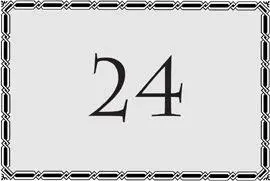
AN HOUR AFTER FINISHING, I was at the blond oak table in the conference room at base ops headquarters. The observers had been dispatched with promise of a full report and permission to transport Aqsaee and Rasekh back to Sheyn Bagh for reburial.
The others were in the exact same chairs they’d occupied on Tuesday. So was I. Weird how people do that.
Large crescents darkened Blanton’s pits, mimicking the bags hanging under his eyes. He’d disappeared after we left the hospital. I wondered where he’d gone. What he’d done to work up such a sweat.
“You okay?” I asked, more to pass time than out of concern for Blanton’s health. As before, we were waiting for Colonel Fisher.
Blanton shrugged one shoulder. “Might be coming down with something.”
After that, we all sat in silence. Minutes passed. Blanton, Welsted, and I knew what we’d found. Noonan did not. He was tense.
Noonan and Welsted half rose when Fisher appeared. Blanton and I remained seated.
Fisher closed the door and took her place at the head of the table. “So.” Quick smile to me. “You’ve finished.”
“I have.”
“I understand you saw some action out there.”
“It wasn’t dull.”
“Proceed.” Fisher leaned back, hands folded in her lap.
“It’s the ever-popular good news and bad news,” I said.
“Hit us with the bad.”
“Mr. Rasekh’s remains were far too damaged to allow any conclusion concerning bullet trajectory. Concerning cause or manner of death at all.”
Fisher offered a tight nod. “And the good news?”
“Mr. Aqsaee was in better shape. Though postmortem damage was extensive, gunshot trauma was evident in the thoracic region. I was able to observe, describe, and record partial entrance and exit wounds on two rib fragments, one vertebra, and on the anterior and posterior surfaces of the sternum.”
One of Fisher’s brows arched slightly.
“His breast bone.”
“Go on.”
“Do you want a full biomechanical description of the fracture patterning?”
“Save that for your report. For our purposes, the bottom line will do.”
“Second Lieutenant Gross did not shoot Ahmad Ali Aqsaee in the back.”
Though quiet before, the room now went deathly still.
A beat, then Fisher said, “Maybe we could use a little more than that.”
“I was able to identify three entrance wounds and two exit wounds. Together these impact sites described at least two bullet paths. The trajectory in both cases was anterior to posterior.”
Same eyebrow.
Читать дальше


